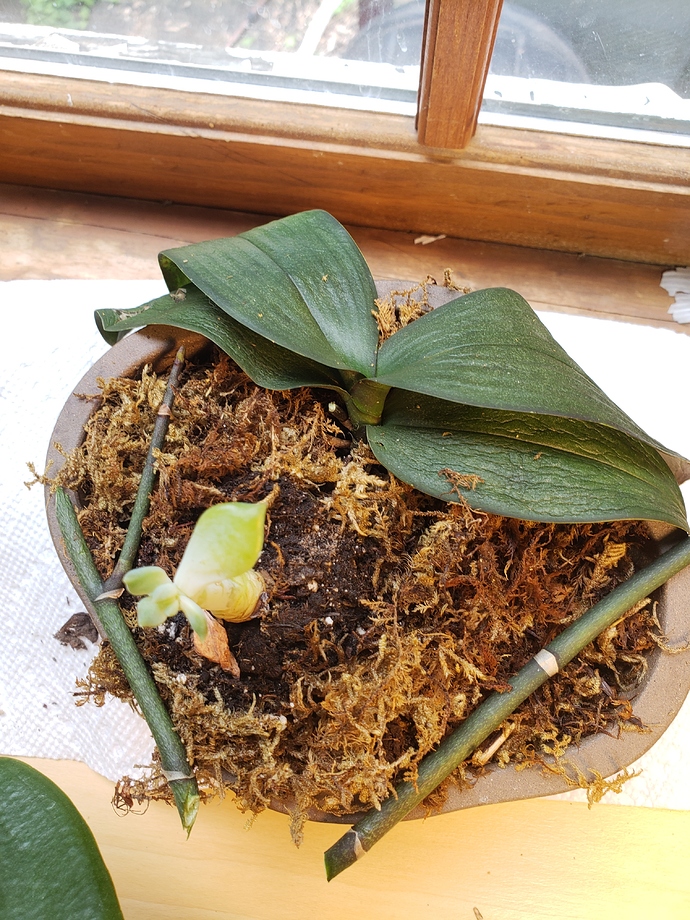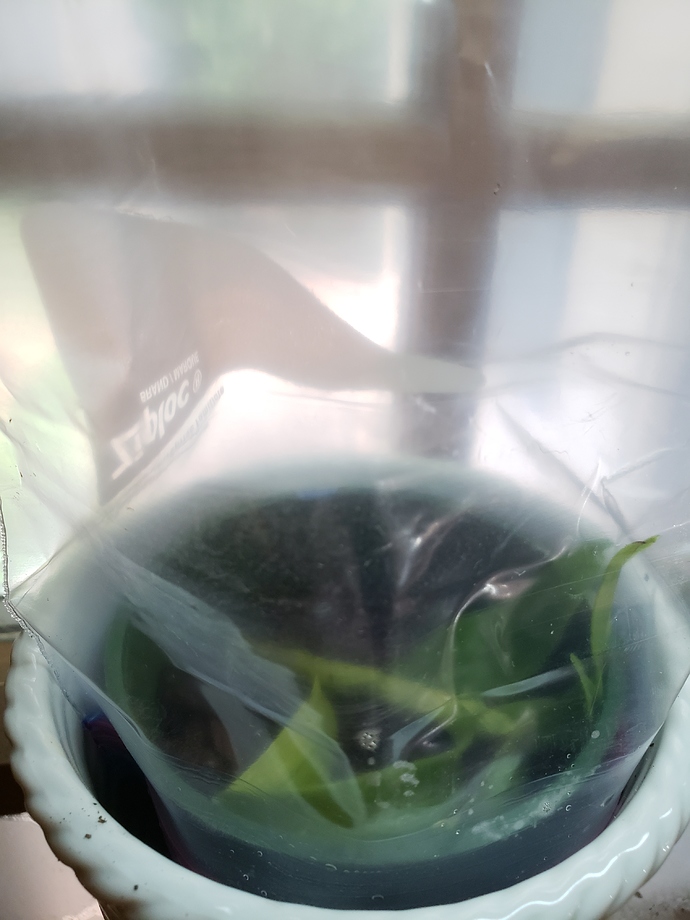most orchids can be difficult because they need an almost constant source of moisture and humidity, so the tendency to water backfires, as plenty of water, along with poor drainage results in paradoxical dehydration-- with the specimen dying of thirst despite literally sitting on water.
you seemed to have fixed that problem with your phal by double-potting, with the upper pot having some clearance over the base of the lower pot, but with the lower pot serving as a non-porous basin that could hold some water to maintain fogginess around the roots at all times, yet aerated just as well.
orchids that suffered significant root damage may still be saved by doing the same set-up, and then placing the set-up in a large, transparent-walled container box that can be sealed(ie, a sterilite box or similar), to ensure high humidity, as if growing the orchid in a terrarium. Or a large clear plastic bag just like you did on the the orchid you were trying to save. Would also be good to let the air out every now and then to prevent anaerobic conditions.
the other issue with orchids is that they do need lots of sunlight to bloom, but direct sunlight scorches the foliage and very few of us will have the energy or the means to simulate dappled sunlight typical of rainforests, so we usually end up placing them by the window sill where sunlight’s intensity could be reduced by glass/semi-transparent curtain or netting. This then leads to another problem, especially with phals and vandas, and that would be the tendency to grow in one direction–towards the light resulting in leverage issues. You could fix this by repotting the specimen, and orient it in an upright position then stuff the open spaces with coco fiber or other fillers to hold the specimen in place. You might have to prune the oldest leaves if they are getting in the way. Next thing need to do would be to periodically turn the specimen, say, on a weekly basis, so it won’t have time to keel over to one side too much.
one last input could think of would be to be touchy-feely and googly eyed with the orchid on the day you obtained it. Since most of us will not buy orchids if they are not in bloom, it means that one will have a good baseline of how firm the foliage and how glossy and green the foliage was when the orchid was at its prime(one could conclude that the orchid was at its prime because it was in bloom when obtained). By familiarizing yourself with the foliage’s characteristics when you obtained it, you could then judge whether or not it is craving sunlight-- if subsequent leaf growth maintains the firmness, sheen, and color when you first obtained it. If the foliage seem to be getting radically larger, soft-ish, floppy, and glossy and overtly bright green, then those are fairly reliable signs of being starved of sunlight.


























